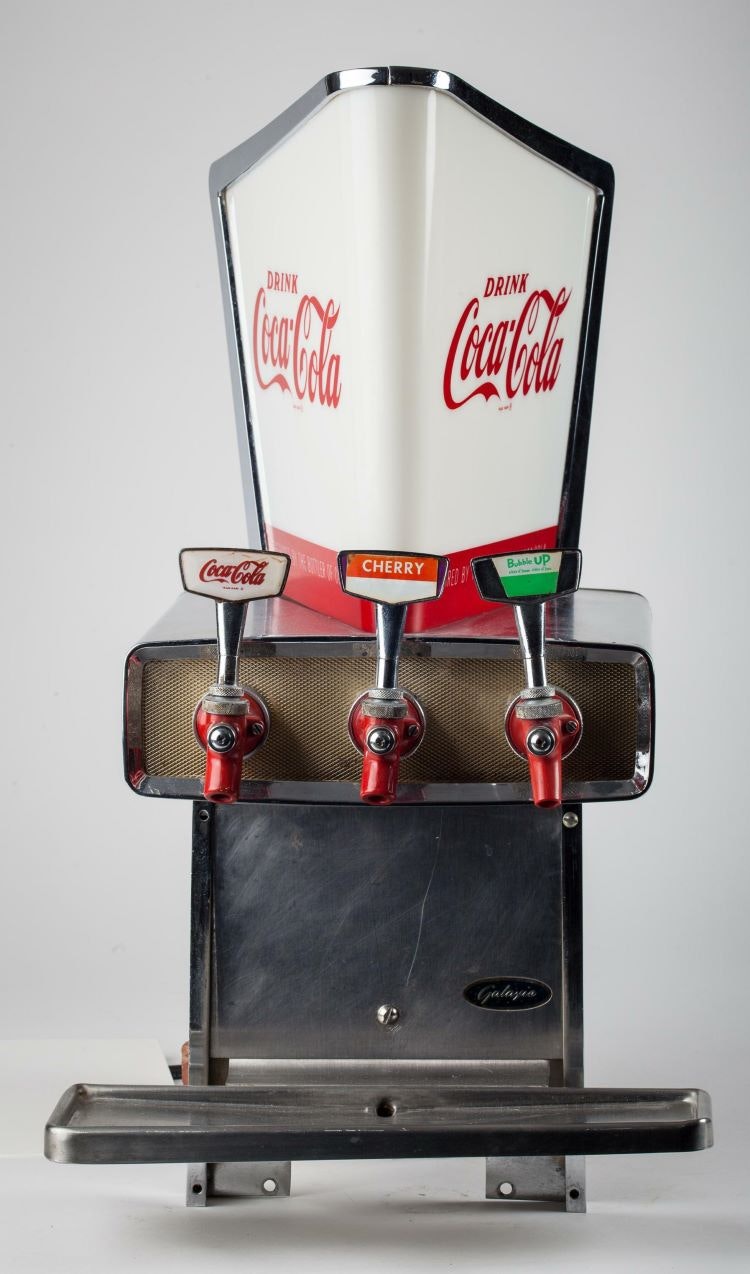Coca-Cola global vice president of design Rapha Abreu has revealed how the company plans to use design to commit to its sustainability goals.
The 137-year-old company operates in over 200 countries and sells two billion servings every day worldwide. Reflecting on the upcoming America ByDesign series, which focuses on Coca-Cola, ByDesign co-founder and executive producer Mike Chapman suggests that the company “could make more of an impact when it comes to saving the planet than some small countries”.
We caught up with Chapman alongside Abreu, who claims that Coca-Cola is rising to these challenges by making key changes to its packaging.

Bioplastics and open-source thinking
By 2025, Coca-Cola envisages that 100% of its packaging will be recyclable globally. It also plans to reduce its use of virgin plastic by a cumulative three million metric tonnes, instead opting for recycled and plant-based materials where they can be used, according to Abreu.
While some Coca-Cola product packaging is already made up of “around 30%” bioplastics, the company is currently working on “a prototype made of 100% bioplastic materials”, says Abreu. After developing its bioplastic technology in the last two years, Coca-Cola opted to share the IP open source with other industries and it has since been adopted by several companies including Heinz.
“In order to do this right, we need to hold hands as a category, as an industry and even with other industries and help each other to make the change that we want to see,” says Abreu.
He explains how, there was some industry-wide hesitation when bioplastics first came into use and that it has been “interesting to see how the industry and the standards have evolved”. Packaging made from 100% recycled PET “was not super clear” and had a more “pigmented feel” than virgin plastic bottles, says Abreu, raising concerns that consumers would perceive the material as “unclean”.
Abreu believes that now, “the world has evolved and no one even pays attention to that anymore”. He also reveals that Coca-Cola is exploring the use of “bottles made of harvested ocean plastic”.

Will the glass bottle return?
By 2030, Abreu says that Coca-Cola will make “at least 50%” of its packaging from recycled materials, while 25% of beverages sold worldwide will have reusable or refillable packaging. This could look like “old milk man” style glass bottles or even hard PET bottles, he adds.
Coca-Cola has also made a commitment to collect and recycle a bottle or can for each one that they sell by 2030, which Abreu describes as a “very ambitious” goal.
The company’s progress in terms of these five commitments is tracked every quarter and a sustainability report is published annually. For some of the goals, Abreu says that Coca-Cola is “almost 90% there”, adding that the initiative is “not just for design” but “companywide”.

Representation and “rebalancing”
Abreu first joined Coca-Cola in 2011 after working agency side in Rio De Janeiro, where the company was his client. He then worked for Coca-Cola in Costa Rica for four years, before moving to the global team from 2014-2019 as senior design director.
After two years at Restaurant Brands International, where he led the Burger King rebrand, Abreu returned to Coca Cola in 2021 to be the company’s first Latin American global vice president of design. He admits to feeling added “pressure and responsibility” to perform well, so that other Latinos could look up to him. One of his driving thoughts was: “If the first Latino doesn’t perform well, what does that mean from the rest of the community?”
After speaking about being the first Latino in his role during his interview with Chapman, Abreu says other Coca-Cola employees reached out to share their own stories. One employee told Abreu that he was the first Asian to lead to legal department in Coca-Cola, which helped him to know that he was “not alone” in his situation.

Abreu believes that diversity makes for a better solution, “especially in the field of design”, and that it “makes sense for the Coca-Cola team to be diverse” because its audiences are also “very diverse”. Since starting as global vice president of design, Abreu says that all his hires have been women in a bid to “rebalance” the company and improve “diversity of thinking, thought and perspective”.
Currently, Coca-Cola’s Global Design core team – the central team based in Atlanta that manages design for global brands – is 45% female and 70% of its employees are ethnically diverse/non-Caucasian. Its Global Design coalition, which comprises 100 designers from across its nine Regional Operating Units, is 60% female and 45% ethnically diverse/non-Caucasian.
Within these nine design teams operating across the globe, 55% of its design leads are female, while 55% of design leads are ethnically diverse/non-Caucasian.

- Design disciplines in this article
- Industries in this article










